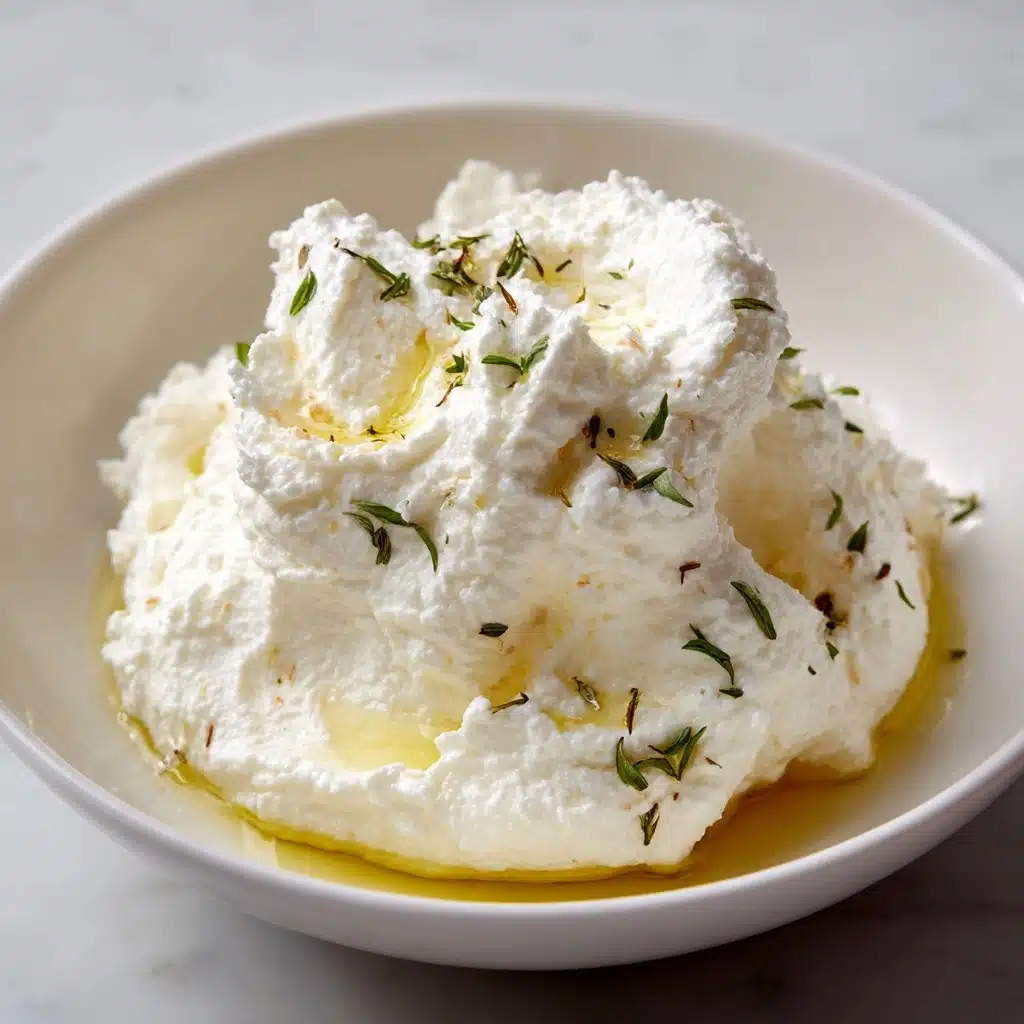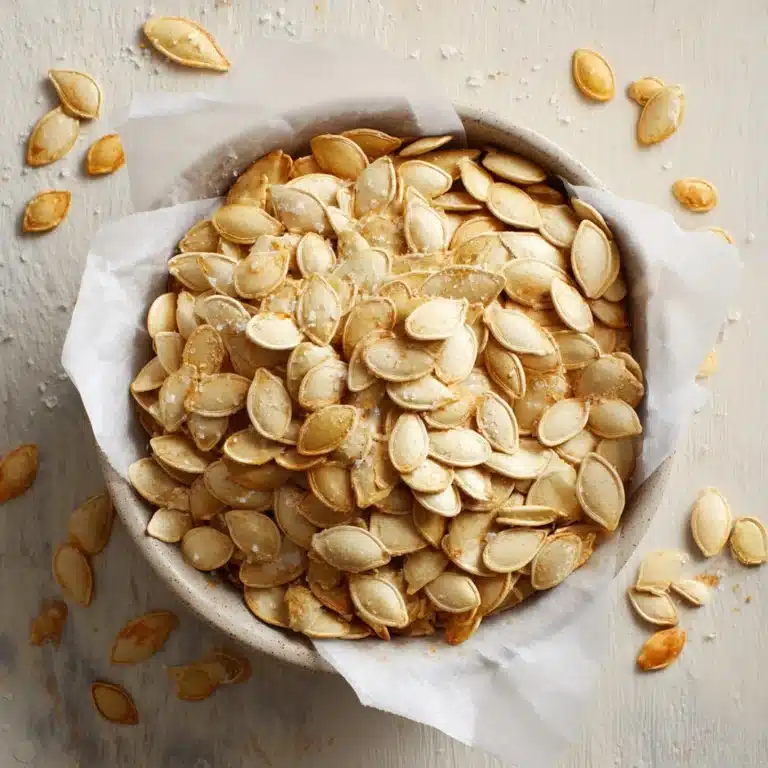This Sicilian Homemade Ricotta Cheese Recipe
There’s nothing quite like the fresh, creamy taste of homemade cheese, and this Sicilian Homemade Ricotta Cheese is pure joy in every velvety spoonful. With just a handful of simple ingredients and a little kitchen magic, you’ll have a batch of authentic, pillowy ricotta that puts store-bought versions to shame. Whether you’re spreading it on toast, folding it into pasta, or savoring it by the spoonful, the delicate flavor and luxurious texture of this cheese will transport you straight to a sunny Sicilian kitchen.

Ingredients You’ll Need
Part of the beauty of this Sicilian Homemade Ricotta Cheese is its simplicity; each ingredient plays a starring role in crafting that signature creamy texture and subtle, tangy flavor. Don’t skimp on quality here — the better your milk and cream, the more divine your ricotta will be!
- Whole Milk: The foundation of this cheese, whole milk brings richness and body to your ricotta. Opt for the freshest milk you can find.
- Heavy Cream (optional): Adding cream is your ticket to extra decadence, making the ricotta even smoother and silkier.
- Distilled White Vinegar or Lemon Juice: This acid is essential for curdling the milk. For a true Sicilian twist, use fresh lemon juice for a bright note.
- Salt: Just a touch enhances all the flavors and brings out the natural sweetness of the dairy.
How to Make This Sicilian Homemade Ricotta Cheese
Step 1: Warm the Milk and Cream
Pour the whole milk and, if you’re feeling indulgent, the heavy cream into a large, heavy-bottomed pot. Sprinkle in the salt. Set the pot over medium heat and gently warm the mixture, stirring occasionally to prevent scorching. Keep a close eye on the temperature — you want it to reach 185–190°F (85–88°C). This gentle heat coaxes out the best texture from your cheese and helps the curds form beautifully.
Step 2: Add the Acid and Watch the Magic
Once your dairy is hot and shimmering, take the pot off the heat. Slowly drizzle in the vinegar or lemon juice while stirring gently. Almost instantly, you’ll see the milk separate into soft, fluffy curds and translucent whey. Now, the most important part: patience! Let the mixture sit undisturbed for 5–10 minutes so those ricotta clouds can fully form.
Step 3: Drain the Curds
Line a colander with cheesecloth or a clean, thin kitchen towel and set it over a large bowl to catch the whey. Using a ladle or a gentle pour, transfer the curds into the lined colander. Adjust the draining time to match your preferred texture — about 10 minutes for a super creamy ricotta, or up to 30 minutes for something a bit firmer and more crumbly. Don’t rush; this step is where the magic happens!
Step 4: Chill and Enjoy
Scoop your fresh ricotta into a container and let it cool in the fridge. It’ll firm up just a touch more as it chills. This Sicilian Homemade Ricotta Cheese is at its prime within a day or two, but you can enjoy it for up to 4–5 days. Each spoonful is a reminder of how rewarding homemade can be!
How to Serve This Sicilian Homemade Ricotta Cheese

Garnishes
A drizzle of golden olive oil, a sprinkle of flaky sea salt, or a scattering of fresh herbs like basil or chives bring out the delicate flavor of this Sicilian Homemade Ricotta Cheese. For something a little sweeter, try a swirl of honey and a dusting of lemon zest — each garnish transforms the ricotta into a new experience.
Side Dishes
Ricotta’s versatility is its secret superpower. Serve it alongside crusty bread, grilled vegetables, or a simple tomato salad for a true taste of Sicily. It’s also wonderful dolloped onto pasta, tucked into lasagna, or spread on warm focaccia for a rustic appetizer.
Creative Ways to Present
Thinking outside the cheesecloth? Try piping this Sicilian Homemade Ricotta Cheese onto crostini, layering it in a jar with roasted peppers, or spooning it over pancakes for a brunch surprise. It also shines as a base for savory dips or sweetened slightly to fill cannoli shells — the possibilities are endless and always delicious.
Make Ahead and Storage
Storing Leftovers
After making your ricotta, transfer it to an airtight container and pop it in the fridge. This Sicilian Homemade Ricotta Cheese is best enjoyed fresh, but it keeps its lovely texture and flavor for up to 4–5 days. Always use clean utensils to prevent spoilage.
Freezing
While you can freeze ricotta, its texture may change and become a bit grainy after thawing. If you have extra, use it in cooked dishes like lasagna or stuffed shells, where minor texture changes won’t be noticeable. For the creamiest results, enjoy it fresh whenever possible.
Reheating
Ricotta is typically served cold or at room temperature, but if you’re adding it to a hot dish, simply let it come to room temperature before using. Avoid microwaving, as too much heat can cause it to separate or become rubbery. Gently folding it into warm dishes works best.
FAQs
Can I use low-fat milk instead of whole milk?
You can, but the texture and flavor won’t be as rich. Whole milk gives this Sicilian Homemade Ricotta Cheese its signature creaminess. Skim or low-fat milk will yield a drier, less luxurious result.
What should I do with the leftover whey?
Don’t toss it! The leftover whey is full of nutrients and can be added to soups, smoothies, or even bread dough for extra flavor and moisture. It’s a wonderful way to get every bit of goodness from your cheese-making adventure.
Can I use apple cider vinegar instead of white vinegar or lemon juice?
Technically, yes, but it will add a distinct flavor to your ricotta. For authentic Sicilian taste, stick with distilled white vinegar or, better yet, fresh lemon juice, which gives this Sicilian Homemade Ricotta Cheese its bright, sunny notes.
How do I make my ricotta extra creamy?
Adding heavy cream to the milk before heating is the best way to boost creaminess. Also, shorten the draining time to about 10 minutes, so the ricotta retains more moisture for a softer, spreadable texture.
Is this recipe gluten-free and vegetarian?
Absolutely! This Sicilian Homemade Ricotta Cheese is naturally gluten-free and vegetarian, making it a perfect addition to all kinds of diets and menus.
Final Thoughts
There’s something truly special about transforming simple ingredients into a creamy masterpiece like this Sicilian Homemade Ricotta Cheese. If you’ve never tried making cheese at home, let this be your delicious invitation — it’s easier than you think, endlessly rewarding, and sure to become a favorite you’ll want to share with everyone you love.
Print
This Sicilian Homemade Ricotta Cheese Recipe
- Total Time: 30 minutes
- Yield: About 2 cups 1x
- Diet: Vegetarian
Description
This Sicilian Homemade Ricotta Cheese recipe teaches you how to make fresh, creamy ricotta at home with simple ingredients. Using whole milk, optional heavy cream, and an acid like vinegar or lemon juice, you can create a versatile cheese perfect for pasta fillings, desserts, or spreading on toast. This traditional method ensures authentic flavor and texture with minimal effort.
Ingredients
Cheese Ingredients
- 1 gallon whole milk
- 1 cup heavy cream (optional, for extra creaminess)
- 1/3 cup distilled white vinegar or lemon juice
- 1 teaspoon salt
Instructions
- Heat the milk mixture: In a large pot over medium heat, combine the milk, heavy cream (if using), and salt. Gently heat the mixture while stirring occasionally to prevent scorching, until it reaches 185–190°F (85–88°C).
- Curdle the milk: Remove the pot from heat and slowly stir in the vinegar or lemon juice. Allow the mixture to sit undisturbed for 5–10 minutes so the curds can form properly.
- Drain the curds: Line a colander with cheesecloth or a clean kitchen towel placed over a large bowl. Gently ladle or pour the curds into the colander, letting the whey drain out. For creamier ricotta, drain for about 10 minutes; for firmer ricotta, drain 20–30 minutes.
- Refrigerate: Transfer the drained ricotta into a container and refrigerate. Use within 4–5 days for best freshness.
Notes
- For authentic Sicilian flavor, use lemon juice instead of vinegar.
- The leftover whey can be saved and used in soups, smoothies, or bread recipes to reduce waste.
- This homemade ricotta is ideal for pasta fillings, desserts, or spreading on toast with honey.
- Prep Time: 5 minutes
- Cook Time: 15 minutes
- Category: Basics, Cheese
- Method: Stovetop
- Cuisine: Italian, Sicilian
Nutrition
- Serving Size: 1/4 cup
- Calories: 90
- Sugar: 2g
- Sodium: 180mg
- Fat: 7g
- Saturated Fat: 4g
- Unsaturated Fat: 3g
- Trans Fat: 0g
- Carbohydrates: 2g
- Fiber: 0g
- Protein: 5g
- Cholesterol: 25mg






